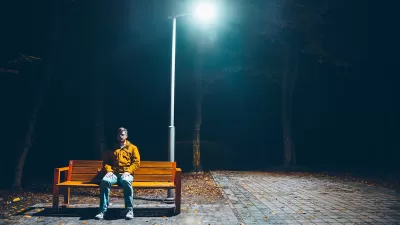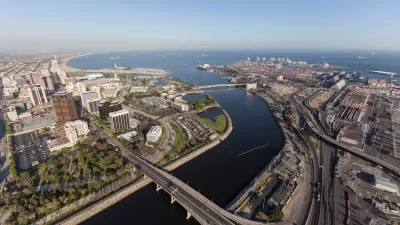Canadian Urban designer Ken Greenberg and American planner Trent Lethco argue that investing in cycling infrastructure improves driving conditions -- for those times that you really need a car.
Greenberg and Lethco point out that continual efforts to increase capacity for cars has only resulted in more congestion. The solution, they suggest, is to treat all modes as complementary and not mutually exclusive: most of us are, at various times, pedestrians, cyclists, transit users and car drivers. Ironically, the more we invest in non-auto infrastructure, the better the driving conditions become:
"Every additional trip we take on foot, on a bicycle or by public transit frees up significant space for drivers, since the 'footprints' of these other modes are so much smaller. The cyclist beside you is not the car in front of you; the bicycle locked to a ring at curbside means one less parking space is taken. Driver, cyclist and pedestrian are complementary rather than mutually exclusive categories. Most of us are all of these at different times. What's crucial is the proportion of time we use each mode, and creating communities where the car is needed for only certain types of trips. For other trips, we can make more efficient choices.
If we decide we want our system to be more efficient, we must...ensure it has the attributes that make the more efficient choices the attractive ones – and that comes through land use, system design, pricing and skillful urban design."
FULL STORY: Drivers, want more space on the roads? Push for bike lanes

Planetizen Federal Action Tracker
A weekly monitor of how Trump’s orders and actions are impacting planners and planning in America.

Restaurant Patios Were a Pandemic Win — Why Were They so Hard to Keep?
Social distancing requirements and changes in travel patterns prompted cities to pilot new uses for street and sidewalk space. Then it got complicated.

Maui's Vacation Rental Debate Turns Ugly
Verbal attacks, misinformation campaigns and fistfights plague a high-stakes debate to convert thousands of vacation rentals into long-term housing.

In California Battle of Housing vs. Environment, Housing Just Won
A new state law significantly limits the power of CEQA, an environmental review law that served as a powerful tool for blocking new development.

Boulder Eliminates Parking Minimums Citywide
Officials estimate the cost of building a single underground parking space at up to $100,000.

Orange County, Florida Adopts Largest US “Sprawl Repair” Code
The ‘Orange Code’ seeks to rectify decades of sprawl-inducing, car-oriented development.
Urban Design for Planners 1: Software Tools
This six-course series explores essential urban design concepts using open source software and equips planners with the tools they need to participate fully in the urban design process.
Planning for Universal Design
Learn the tools for implementing Universal Design in planning regulations.
Heyer Gruel & Associates PA
JM Goldson LLC
Custer County Colorado
City of Camden Redevelopment Agency
City of Astoria
Transportation Research & Education Center (TREC) at Portland State University
Camden Redevelopment Agency
City of Claremont
Municipality of Princeton (NJ)





























